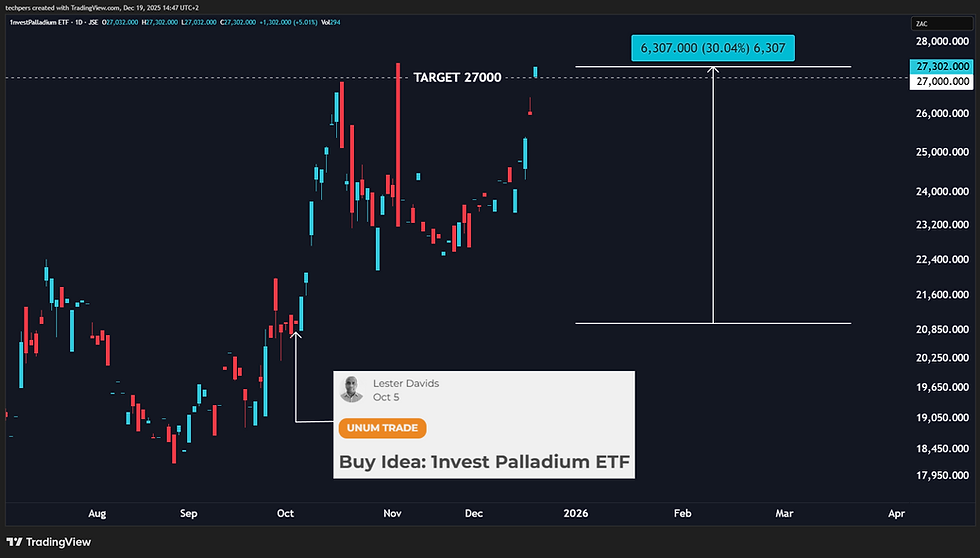Market Risk Index: What is the Current Sentiment?
- Lester Davids

- May 6
- 2 min read
Trade Local & Global Markets with Unum Capital.
To get started, email tradingdesk@unum.co.za
Data as of Tuesday, 06 May at 10h35
Daily Time Frame

As of Friday (02 May), sentiment was as follows (slide number 4 of 47):

The indicator is a custom-built risk and sentiment index, designed to assess market risk appetite, including whether sentiment is at an extreme position (i.e. excessively bullish or excessively bearish).
Components:
Copper: Copper often serves as a proxy for global economic activity. A decline in copper prices could signal slowing economic growth, increasing risk.
High Beta vs Low Beta: High beta stocks tend to be more volatile than low beta stocks. A widening spread between high and low beta returns might indicate increased risk aversion.
Growth vs Value: Growth stocks typically outperform value stocks in bull markets. A shift towards value stocks could suggest investors are becoming more cautious.
EM Currencies: Emerging market currencies can be sensitive to risk appetite. A weakening of EM currencies could signal increased risk aversion.
AUD/USD: The Australian Dollar is often used as a proxy for global risk sentiment. A decline in AUD/USD could indicate increased risk aversion.
Consumer Staples vs Consumer Discretionary: Consumer staples are generally considered defensive assets. A shift towards consumer staples could suggest investors are seeking safety.
Semiconductors vs S&P 500: The semiconductor sector is cyclical and sensitive to economic downturns. Underperformance of semiconductors relative to the broader market could signal increased risk.
Russell 2000 ETF: This ETF tracks small-cap stocks, which are generally considered riskier than large-cap stocks. Underperformance of the Russell 2000 could suggest increased risk aversion.
U.S. Dollar Index (Inverse): A strengthening US Dollar often signals a flight to safety, suggesting increased risk aversion.
Lester Davids
Senior Investment Analyst: Unum Capital




Comments